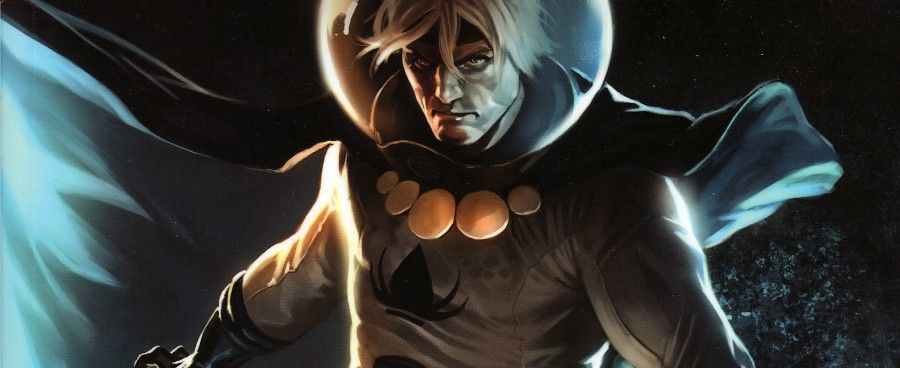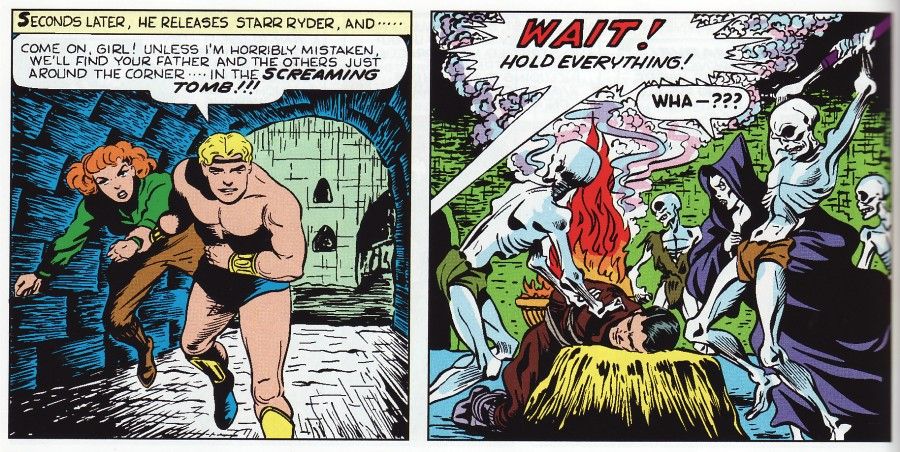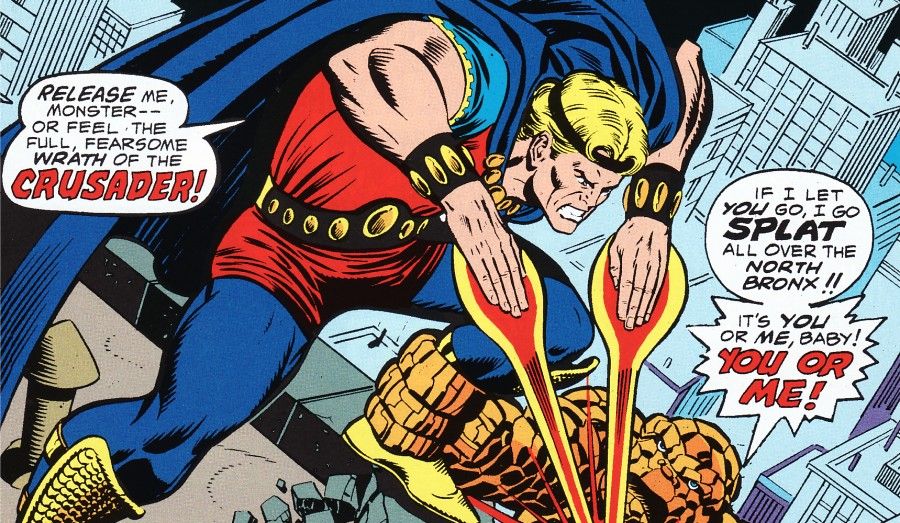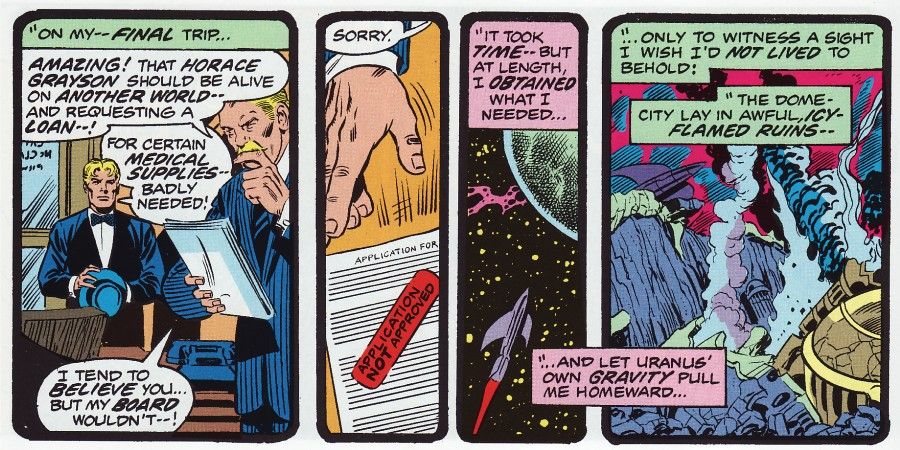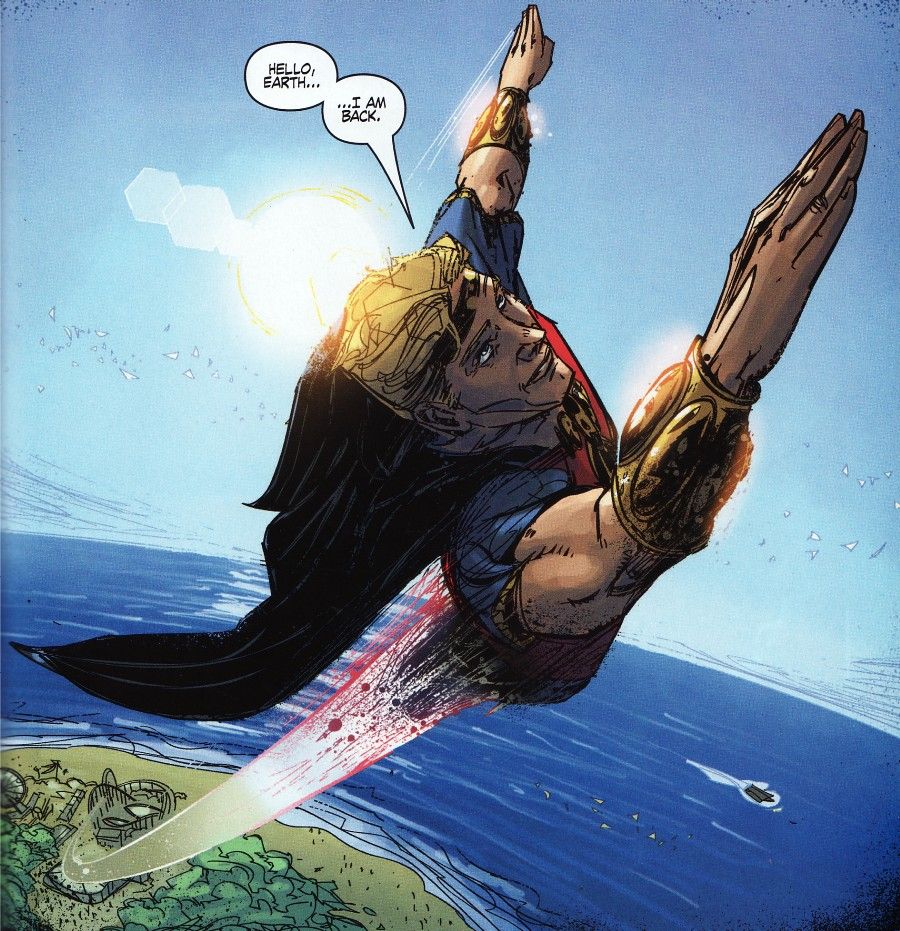As I’m writing this, folks are arriving in San Diego and getting settled for the big show. It’s going to be a busy weekend as comics fight with movies and TV for convention-goers’ attention. And as SDCC continues to diversify – adding bigger and bigger names to its attractions – I figured that maybe it would be appropriate to do the same thing here this week. We’re typically focused on creator-owned adventure comics, but at the risk of stepping on Tom and Carla’s toes, I’d like to discuss something this week that’s mostly an issue only for big-time, corporate-owned, super-hero comics.
We’re talking of course about retroactive continuity – retcons – that controversial thing that happens when a character’s adventures have gone on long enough that they include embarrassing things that need fixing. Or at least someone thinks they need fixing. People of course disagree about these things and that’s where the controversy comes in.
What reminded me of all this is Marvel Boy: The Uranian. Marvel Boy’s a fellow who’s been through a lot of continuity changes, most of which are documented in the collected edition of Jeff Parker and Felix Ruiz’s mini-series. It’s an excellent place to get a snapshot of both the positive and negative aspects of retconning.
Retcons: Hero or Menace? Or, Who Crusades for the Crusader? After the break.
I understand why Marvel organized the collection the way they did, but it’s out of order. It begins of course with the recent mini-series, and then reprints older Marvel Boy stories in back. Having read none of it before, I disregarded the printed order and started with the reprints, working my way forward chronologically and getting the history of the character.
The oldest stories are from the '50s Marvel Boy and Astonishing comics and they’re perfectly, wonderfully awesome. I like Adam Strange and all, but Marvel Boy is everything DC’s space pulp character should have been. Like Strange, he’s a citizen of two worlds: modern-day (at least at the time) Earth and a futuristic planet of wonders that provides him with the fantastic technology he uses on his escapades. Adventures take place on both worlds, opening the range of stories that can be told. But unlike Adam Strange, Marvel Boy is in full control of his comings and goings. There’s no tragic romance in which the hero is continually ripped away from his loved ones to add bitterness to the stories. Marvel Boy is pure, undiluted fun. Or was before Roy Thomas got a hold of him.
In the original stories, Marvel Boy helped Atlanteans fight pirates, defeated space tyrants, bandied with zombies and their vampire mistress, matched wits with a magician, plied against a pernicious pen, scrapped with savage suits (not businessmen; clothing), inspired a Uranian Youth Patrol, and dated girlfriends on both planets. None of which was apparently good enough for Marvel in 1975, because Fantastic Four writer/editor Roy Thomas trashed it all in FF #164-165, which are also reprinted in the new collection.
One reason that most people can’t agree about retcons is that we all like different things and it usually has more to do with our first loves than with any objective measurement of quality. I remember watching the Barbara Gordon and Cassandra Cain fans going at it on the DC message boards back in the day about who the one, true Batgirl was. Those were some ferocious fights, as were the Hal Jordan/Kyle Rayner ones. But in all the shield-beating over who had dibs to which superhero name, no one ever mentioned Betty Kane and precious few brought up Alan Scott. ‘Cause none of the arguers had read those stories.
Same goes for retcons. If I like that Puck from Alpha Flight was born a little person and had fought valiantly against the physical pain and other disadvantages of that condition to battle evil, I’m going to be seriously pissed when you tell me that no, that was never true; he was actually a normal-sized guy who turned little when he trapped a demon in his body. On the other hand, if you tell me that Alfred Pennyworth wasn’t really the meddling son of the Wayne family’s original butler, but a faithful friend and surrogate father to Bruce for his entire life – I’ll be perfectly okay with that.
I wish I could say that Marvel Boy was a good control case, but I realize that’s not true. Though I didn’t grow up with the character, Parker’s use of him in Agents of Atlas has already colored the way I think about him. But then again, Parker uses him very differently than he was portrayed in the ‘50s. More on that in a second, but maybe Marvel Boy’s a good control case after all. He started off exceedingly fun; Thomas turned him into a raving villain.
In Fantastic Four, Marvel Boy’s home on Uranus is destroyed and Marvel Boy blames Earth. Specifically, a chain of banks in New York City that once turned Marvel Boy’s dad down for a loan. So the hero renames himself Crusader and returns to Earth to wreak vengeance. If I’d read these two issues in the ‘70s, they’d be just another throwaway story about a cosmic threat in need of beating by the Fantastic Four. Reading them on the heels of the ‘50s stuff, they’re really depressing.
I don’t want to get down on Thomas too much. He was a writer with a deadline and a constant need for new villains to throw at his characters. Why not pull out this old dude nobody remembers from twenty years ago and retool him a bit? Or – as the case may be – a lot? But if no one remembers him, why use him at all? Why not make up a new guy with a similar origin? And if people do remember him, why go to such lengths to screw him up? What’s the point? I don’t have any more answer to that than I do to why Bill Mantlo made Northstar a half-elf.
The kind of ludicrous thing about retconning is how much it’s done and then undone. And then often done again. That’s going to sound ungrateful to Parker, but I don’t mean it to. I very much appreciate his rescuing Marvel Boy from Roy Thomas. He didn’t take him all the way back to his happy-go-lucky ‘50s persona, but he did redeem him with a major retcon of his own in Agents of Atlas that’s also reflected in the Marvel Boy collection. The Crusader, it turns out, wasn’t really Marvel Boy at all, but a back-up plan by the Uranians to complete their agenda for Earth in case Marvel Boy disappointed them. Which he did.
What’s ridiculous isn’t Parker’s explanation, but the need for it. I mean, the success or failure of a retcon is all in whether of not you’ve got the chops to pull it off and Parker does. I remember when Joe Quesada made his “Dead means dead” pronouncement right before letting Joss Whedon resurrect Colossus. Dead only meant dead if you couldn’t pull off the resurrection story with sufficient skill. Retcons should only be attempted by highly skilled writers who know exactly what they’re doing.
But what, exactly, constitutes Knowing What You’re Doing? Is it as simple as respect and care for the characters? Is it a fundamental writing skill that can be learned? This is where you all come in. I’ve already mentioned a few examples of retcons from both Marvel and DC that worked and didn’t work for me. What retcons do you appreciate most? Which do you wish someone would come along and undo? I don’t want to make too many rules about the discussion, but I’m less interested in hearing about out-and-out continuity reboots like any of the Crisis stories. I’m curious about stories that try to adjust continuity while still remaining in continuity. And finally, what makes the difference between a good retcon and a nasty one?

